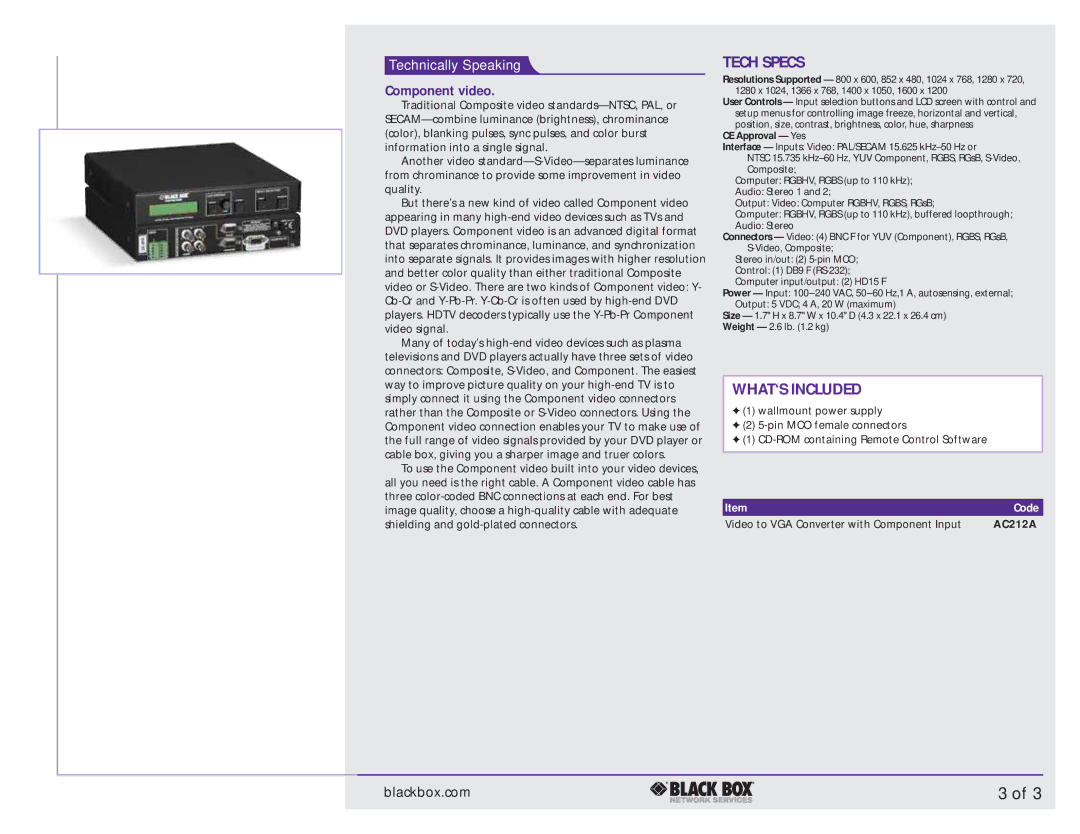Video to VGA Converter specifications
The Black Box Video to VGA Converter emerges as a pivotal solution for those seeking to bridge the gap between diverse video formats and VGA displays. This versatile converter enables users to connect a variety of video sources, such as composite video, S-Video, or component video, to standard VGA monitors, projectors, or other display devices.One of the standout features of the Black Box Video to VGA Converter is its ability to support a wide array of video resolutions. It typically accommodates resolutions up to 1024x768, ensuring that the video output remains clear and crisp. This capability is essential for professionals in fields such as education, business presentations, and digital signage, where a high-quality display is crucial for effective communication.
Another significant characteristic of this converter is its plug-and-play functionality. With no need for additional drivers or complicated installation processes, users can quickly set up the device and begin using it right away. This ease of use is particularly beneficial for non-technical users who require straightforward solutions for their video display needs.
The Black Box converter also incorporates advanced scaling technology. This ensures that video signals are optimally processed and output at their best quality, regardless of the source. The integrated video scaling technology enhances the viewing experience by minimizing distortion, maintaining image integrity, and ensuring vibrant color reproduction.
In terms of design, the Black Box Video to VGA Converter is compact and portable, making it an excellent choice for remote presentations or on-the-go setups. Its robust construction guarantees durability and reliability, which is essential for businesses that rely on frequent use.
Furthermore, compatibility is a strong suit of the Black Box Video to VGA Converter. It supports a range of video formats and provides flexibility to integrate with various devices, including cameras, DVD players, and gaming consoles, making it a versatile tool for multiple applications.
In summary, the Black Box Video to VGA Converter combines a host of features, including broad compatibility, high-resolution support, user-friendly setup, and advanced scaling technology, making it a must-have for anyone looking to facilitate smooth video conversion and presentation. With its reliability and performance, it stands out as a valuable asset for both personal and professional usage.

